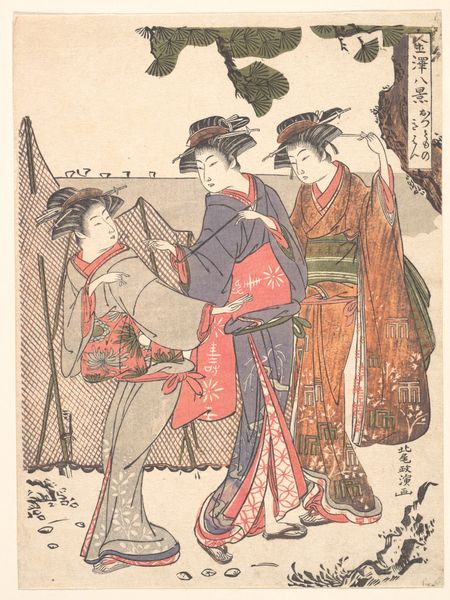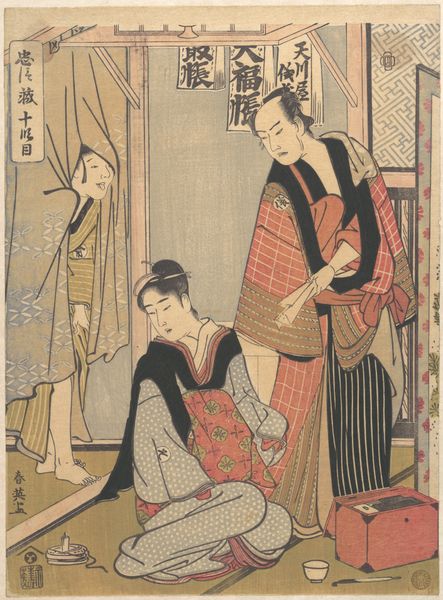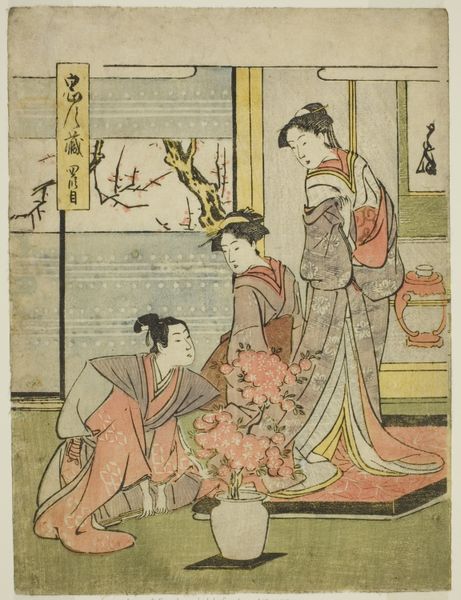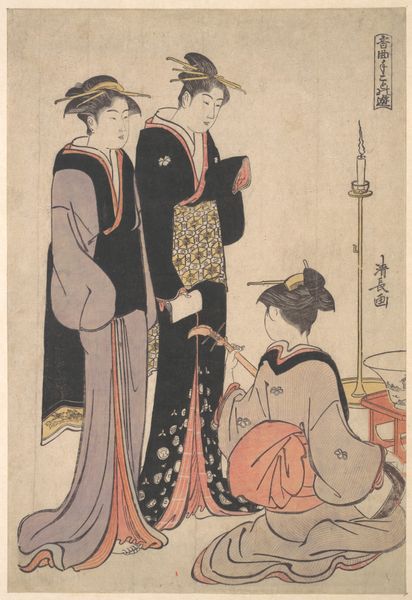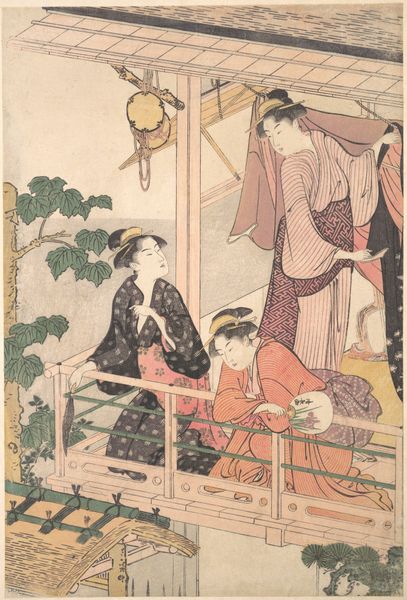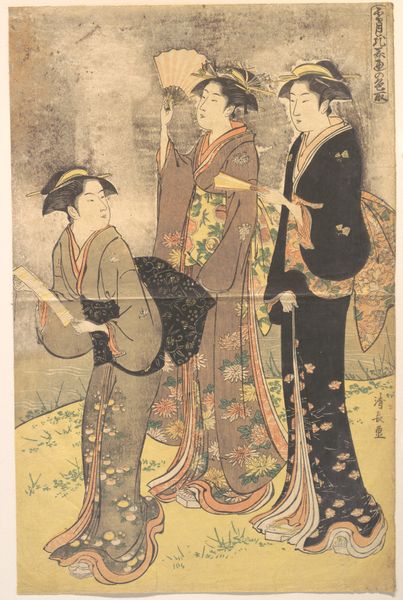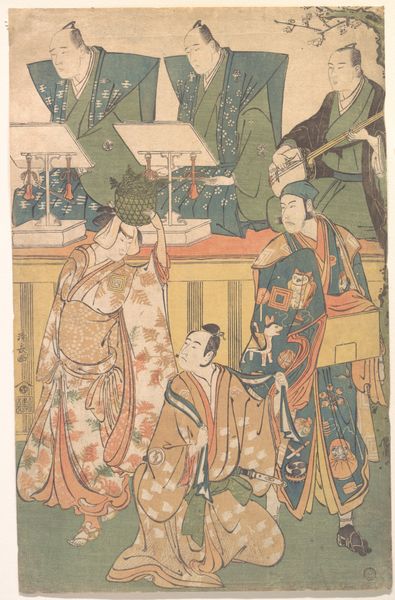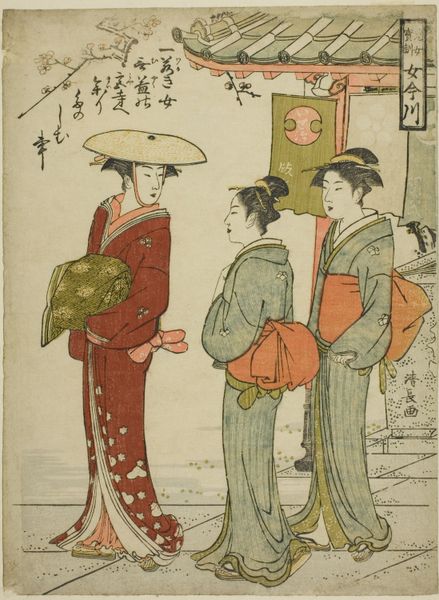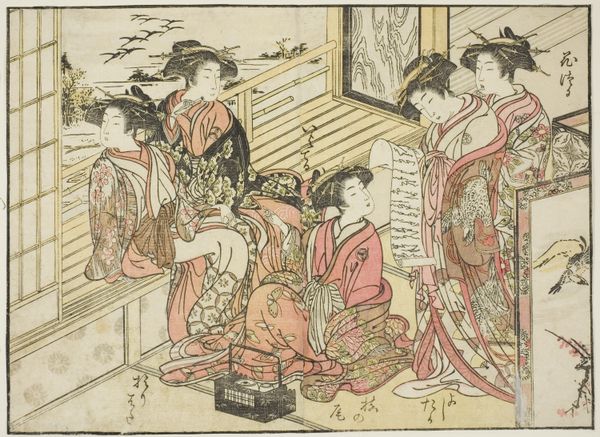
Tomigaoka, from the series "Ten Scenes of Teahouses (Chamise jikkei)" c. 1783 - 1784
0:00
0:00
print, woodblock-print
# print
#
asian-art
#
ukiyo-e
#
figuration
#
woodblock-print
#
genre-painting
Dimensions: 25.7 × 18.5 cm
Copyright: Public Domain
Editor: Here we have "Tomigaoka, from the series 'Ten Scenes of Teahouses'," a woodblock print made around 1783-1784 by Torii Kiyonaga, currently residing at The Art Institute of Chicago. The muted palette gives the piece a very serene feeling, almost contemplative. What strikes you when you look at it? Curator: I think it's crucial to understand these prints not just as art objects, but as documents reflecting the social and cultural landscape of the Edo period. These "Ten Scenes of Teahouses" offered a glimpse into leisure activities accessible to certain social classes, particularly those associated with urban pleasure districts. The teahouses were central to those social and cultural activities, so what can we deduce from that alone? Editor: It points to a growing urban culture with more people who could afford leisure time? The prints acted almost as advertisements for these spaces, promoting them and establishing social norms about how they should be used. Curator: Precisely! And the idealized representation of women, the figures in the print, served specific ideological purposes. They weren't just portraits; they promoted standards of beauty and conduct. Are these depictions straightforward, or do you think there’s a critical lens we should apply? Editor: A critical lens, definitely. I mean, we can see how these prints helped to normalize certain roles and expectations for women, even creating a kind of social pressure through art. And, thinking about it now, prints would have been widely distributed and accessible to multiple demographics. Curator: Exactly. And their prevalence reinforced and spread particular values and norms, shaping public perceptions of beauty and gender. Looking closely at the context provides insight beyond the aesthetics alone, what else do you note about it? Editor: I guess thinking about this, you see these aren't just images. It is a way for a historical society to present itself to the population at large and for that group to reflect on the socio-political happenings of the time. Thanks for making me think about that. Curator: Absolutely. Seeing art as an artifact deeply entrenched in our culture helps one contextualize society and, simultaneously, comprehend the nuances behind artwork.
Comments
No comments
Be the first to comment and join the conversation on the ultimate creative platform.
